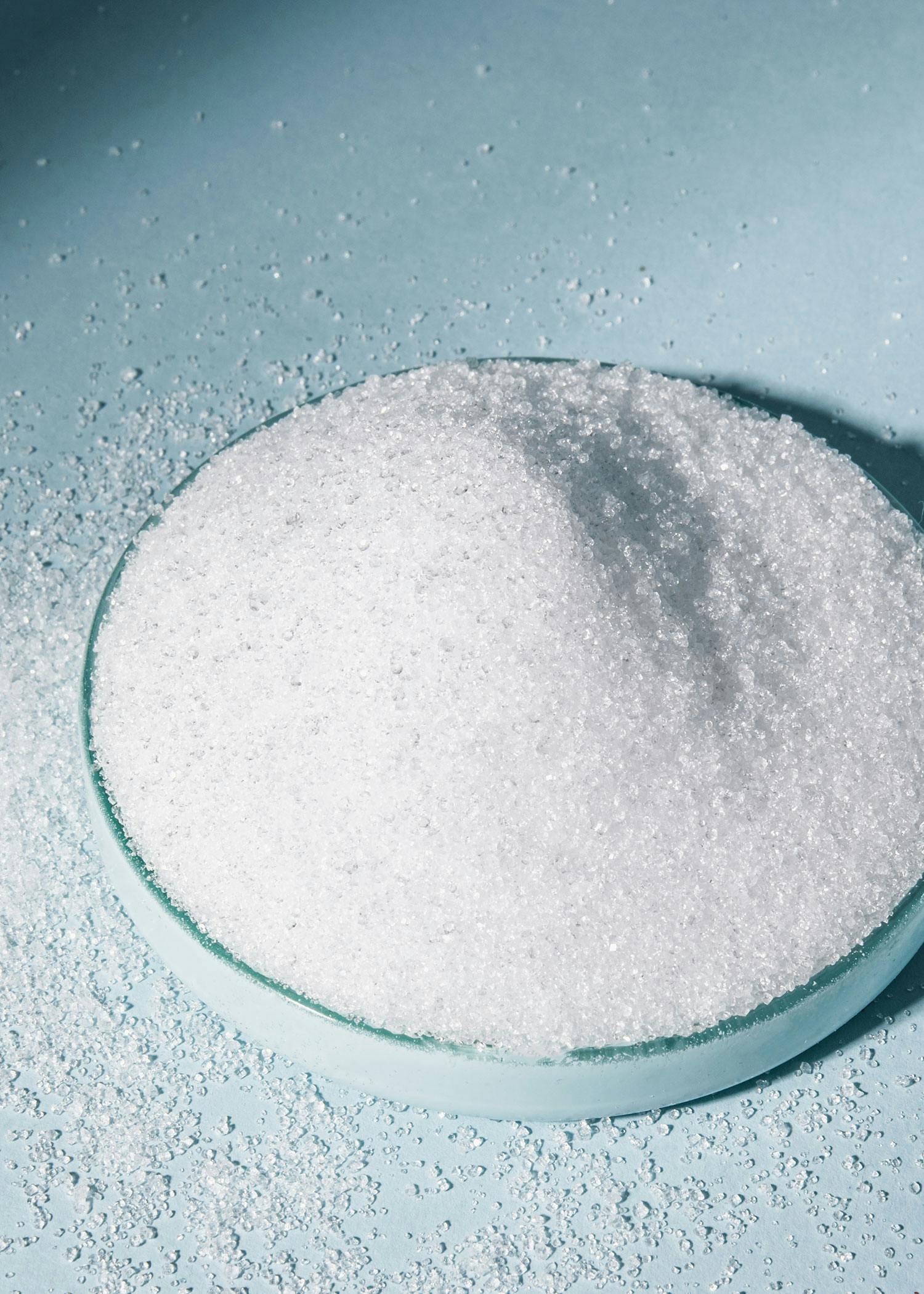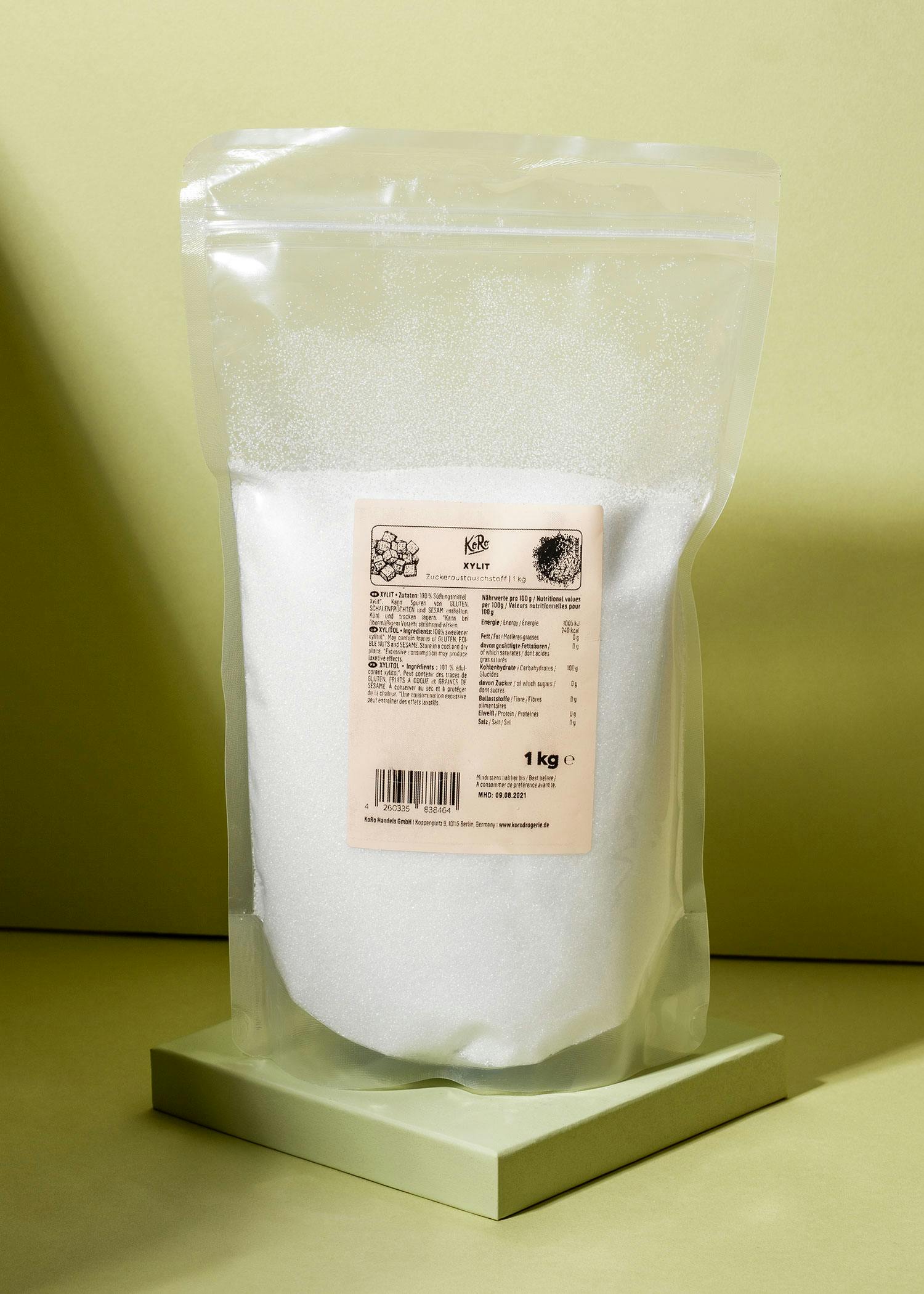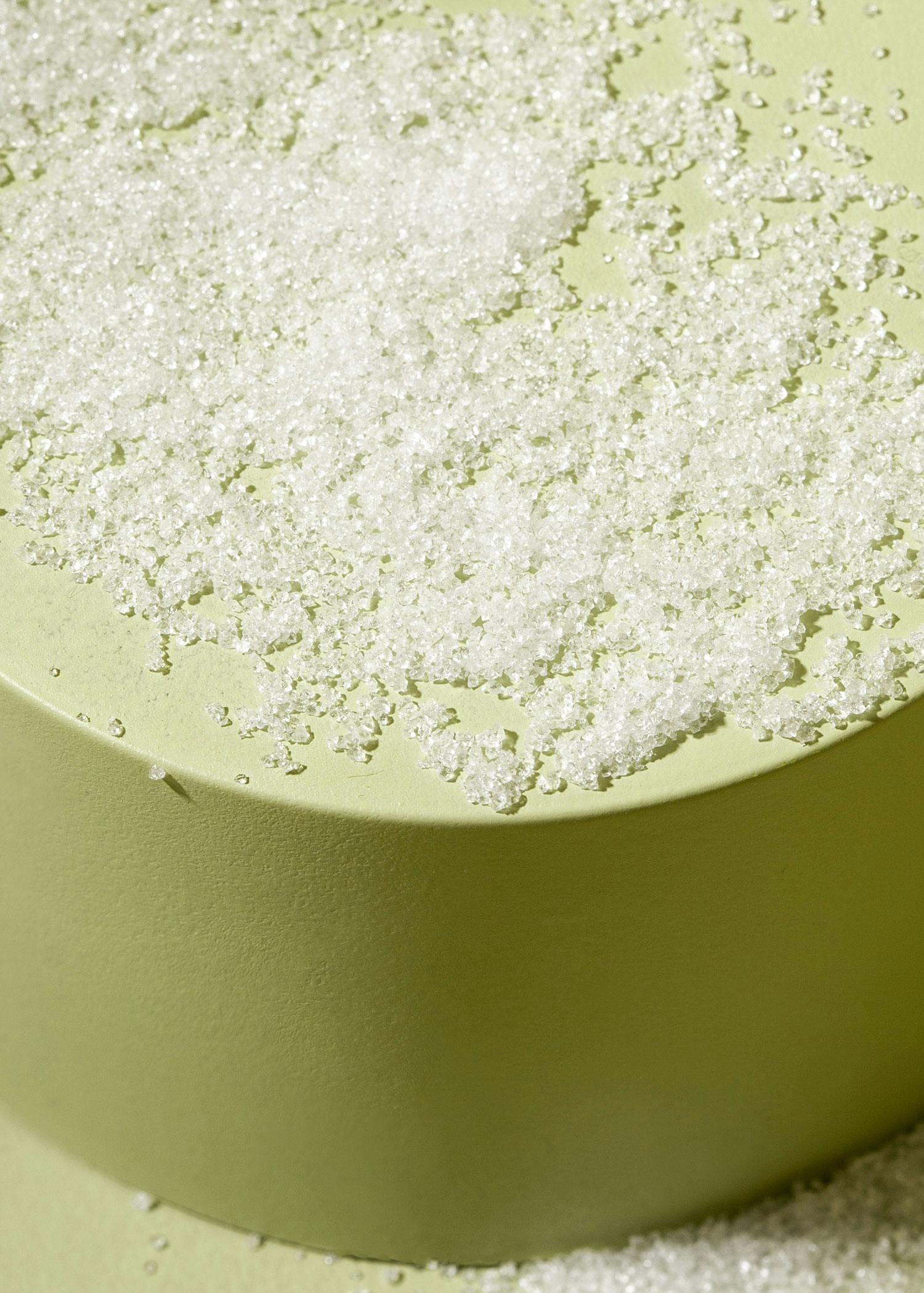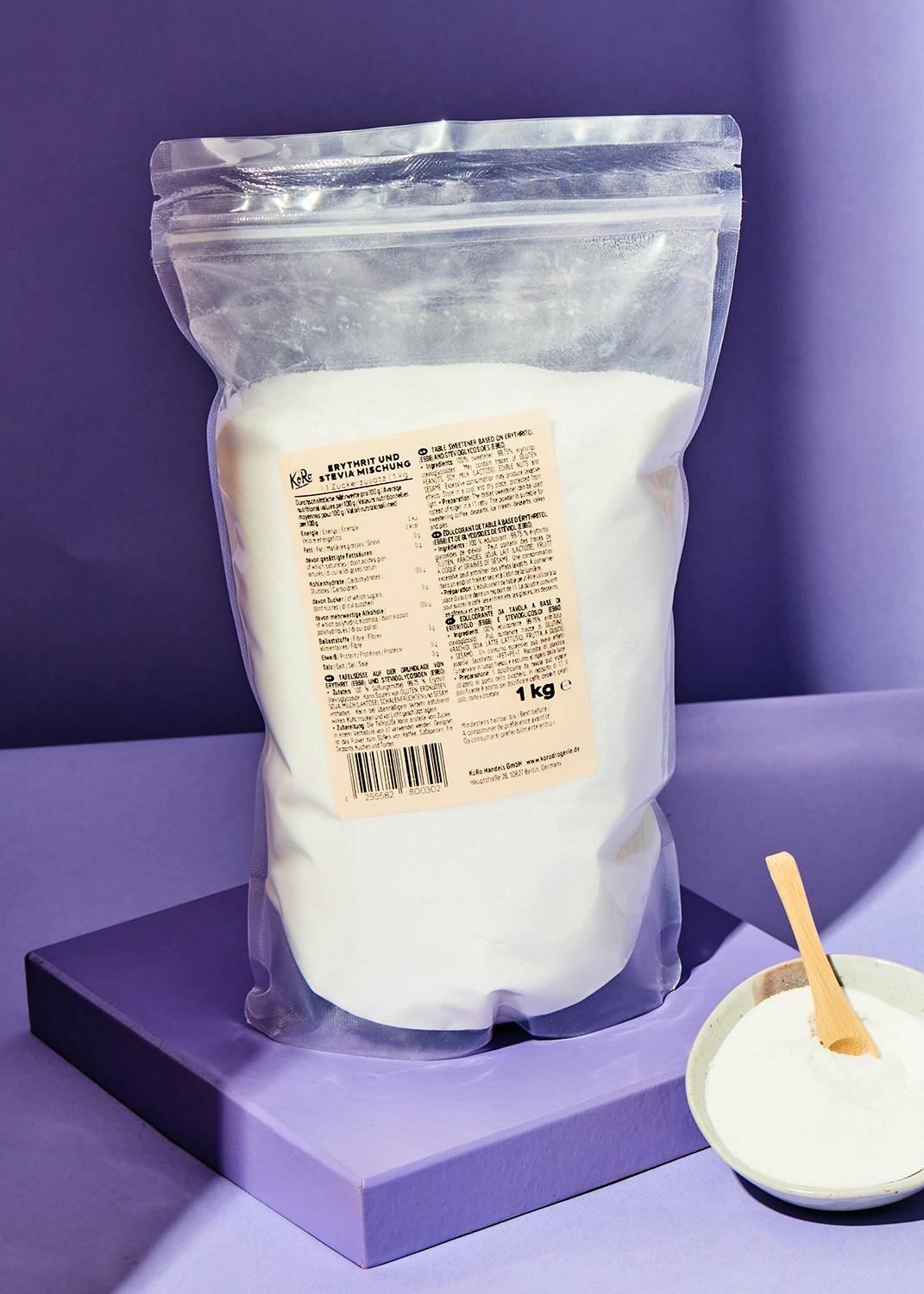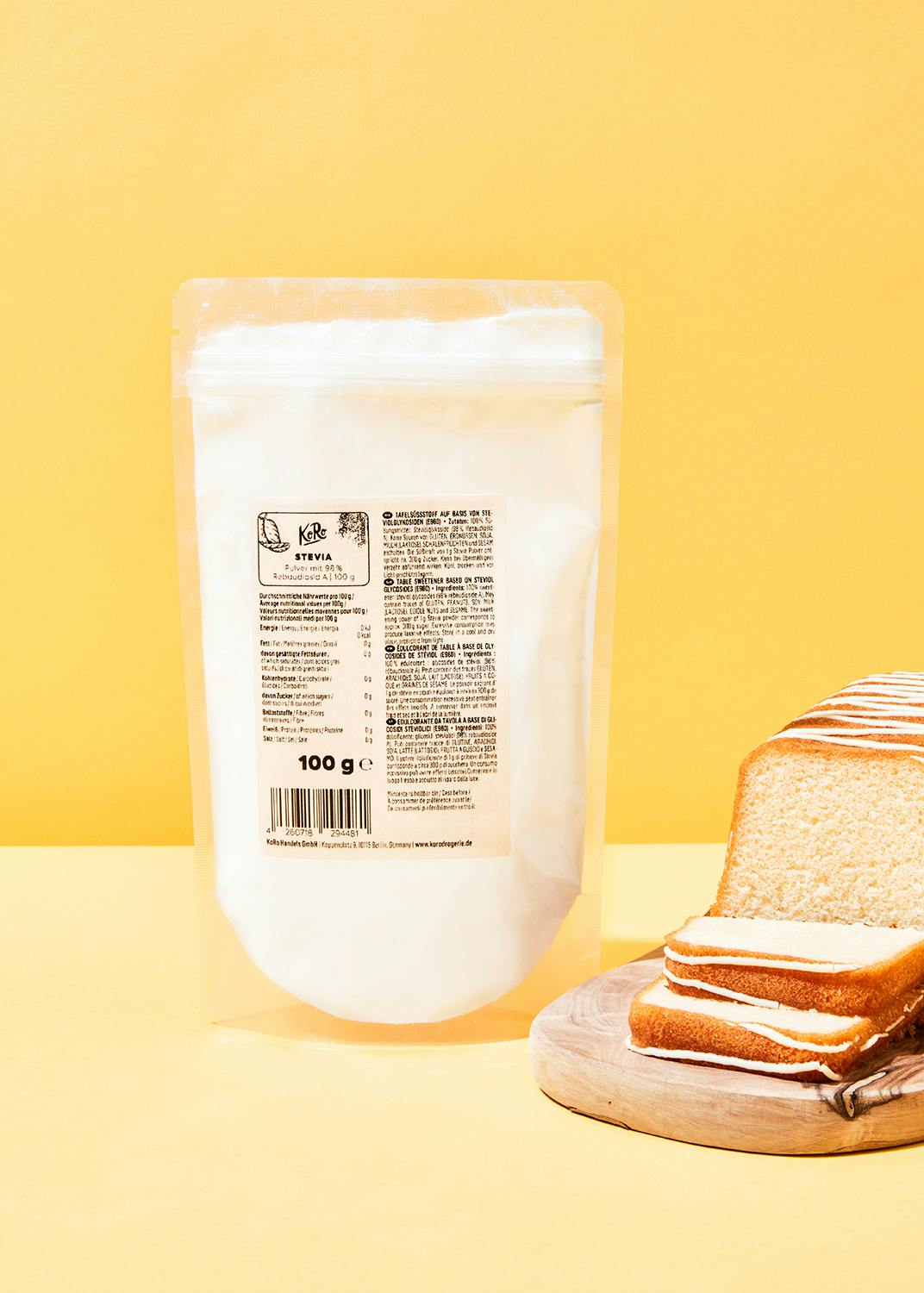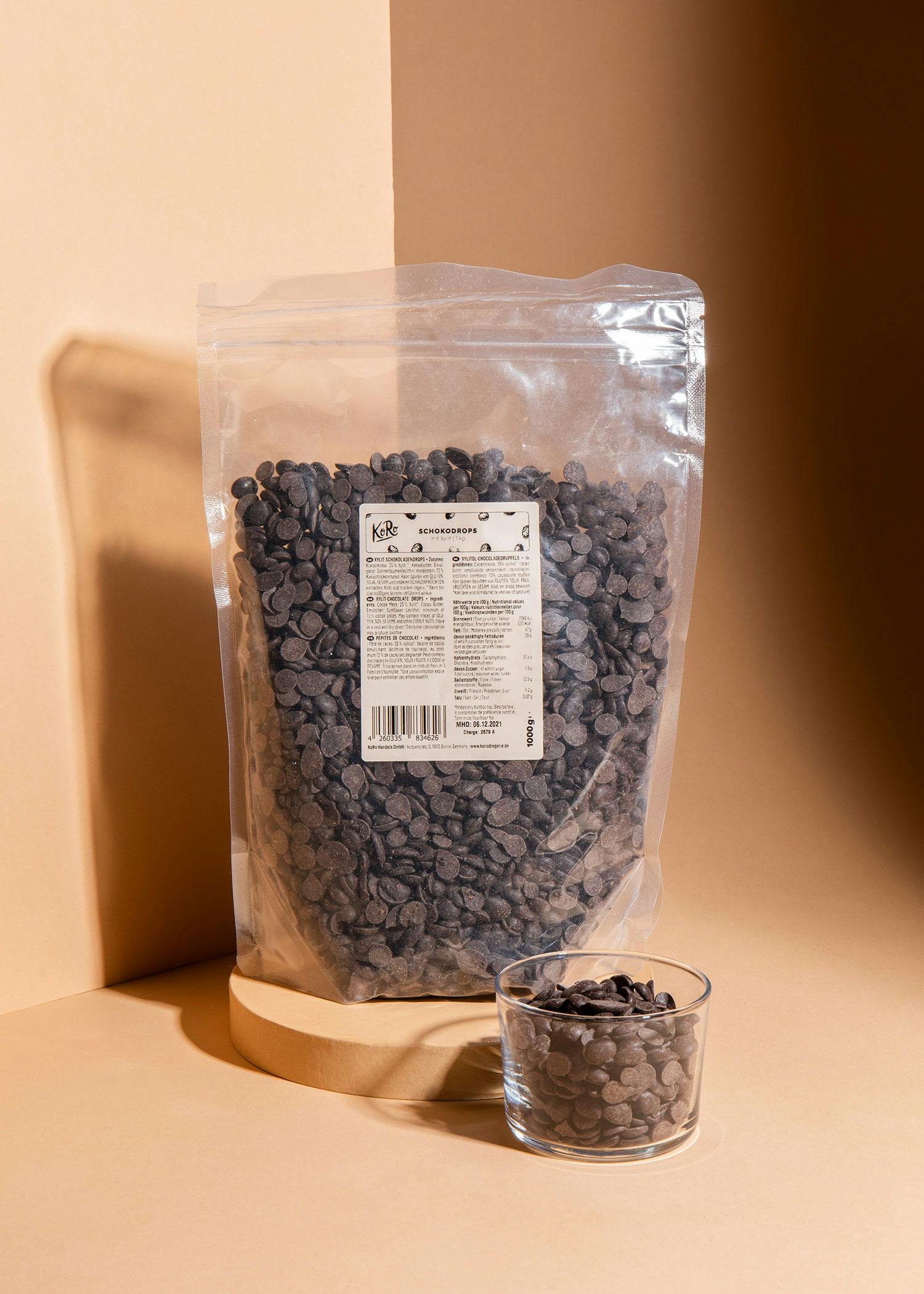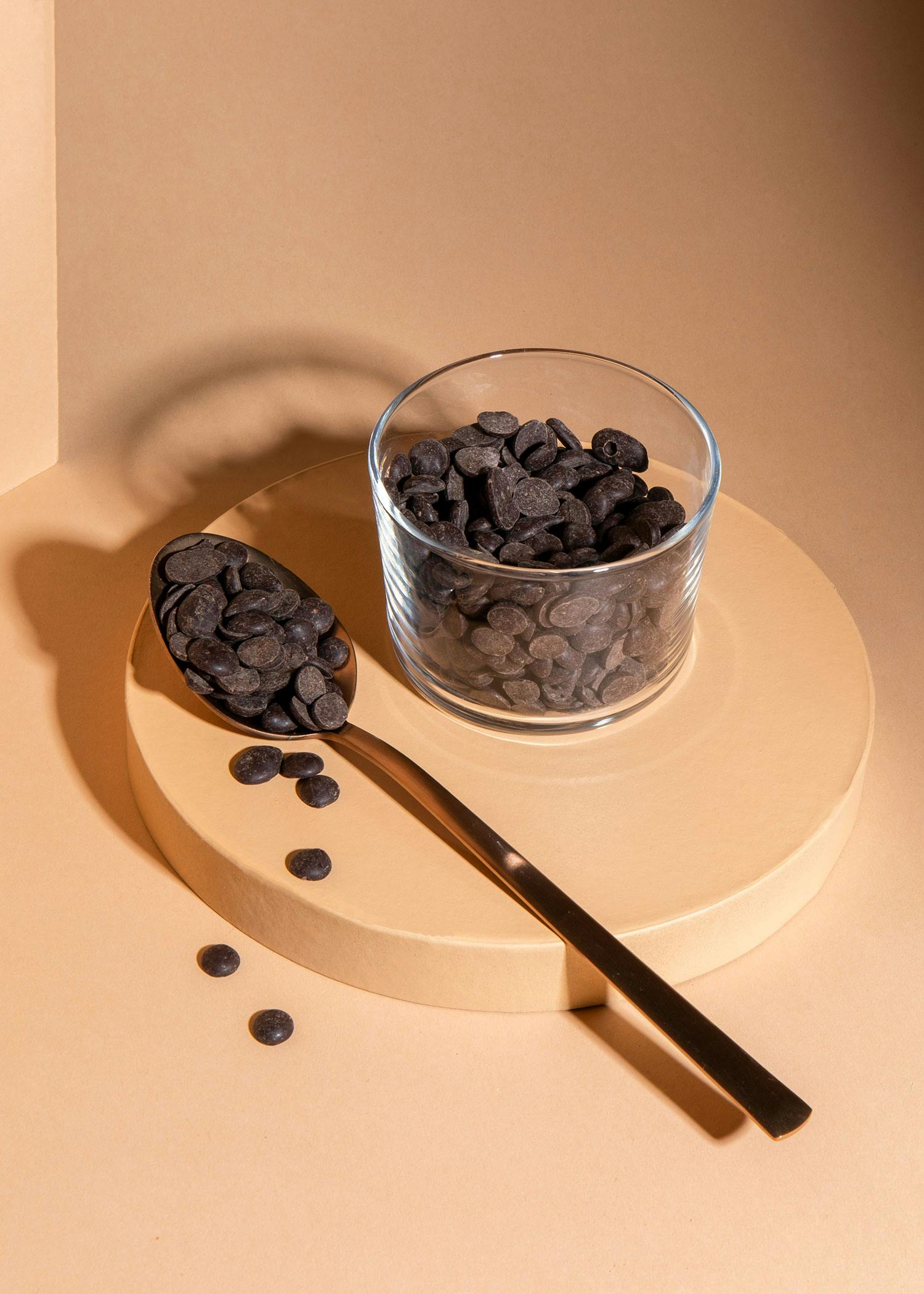
Xylitol, erythritol, sorbitol and the like are becoming increasingly popular. We also have some products that are sweetened with sugar alcohols, such as these two: Chocolate drops with xylitol or chocolate pretzels with maltitol.
You can now find most sugar alcohols in crystal form like normal household sugar in the supermarket. You can find out more about them in the following lines.
Sugar alcohols - what are they all about?
Most sugar alcohols are obtained from natural substances and chemically modified. For example, wood sugar becomes xylitol and the alcohol in grape sugar becomes sorbitol. They are also known as polypols and fall directly under the category of sweeteners according to current additive legislation. They used to be considered a separate group and were called sugar substitutes. Accordingly, you will still find some articles with this name on the Internet.
Fewer calories than household sugar
Unlike sweeteners, sugar alcohols are not calorie-free. Their caloric value is approx. 2.4 kilocalories per gram. This is therefore significantly lower than that of household sugar at around 4 kilocalories per gram. One exception is erythritol, which is virtually calorie-free.
Sweetening power partly similar to household sugar
While sweeteners, for example, have a significantly higher sweetening power than conventional sugar - 30 to 3,000 times sweeter, depending on the type - the taste and volume of sugar alcohols is very similar. Accordingly, sugar alcohols can be processed in a similar way to household sugar. However, this does not mean that you can replace household sugar 1:1 with them. Each sugar alcohol has a slightly different sweetening power and special properties.
Low influence on blood sugar levels
Another special feature is that the human body can utilize sugar alcohols almost independently of insulin. This means that consuming products sweetened with xylitol and the like instead of sugar has a lower impact on your blood sugar level. Diabetics can therefore use sugar alcohols as an alternative to sugar, but must still take them into account when calculating their calorific value.
Snacking without tooth decay
Furthermore, sugar alcohols do not have a cariogenic effect - i.e. they do not cause tooth decay. For example, it has been shown that chewing gum that is 100% sweetened with xylitol reduces plaque on the teeth and thus lowers the risk of tooth decay in children.
Generally harmless
Sugar alcohols are generally considered harmless from a health point of view and are not subject to any quantity limits in food production. Only in higher quantities can they have a flatulent or laxative effect. This is because they are not fully absorbed by the small intestine and some of them enter the large intestine unchanged, where they can lead to diarrhea if consumed in large quantities.
A statement to this effect is required on food labels if the proportion of sugar alcohols is more than 10 percent of the total product.
Sugar alcohols at a glance
To date, 8 sugar alcohol s have been approved in the EU. As they are considered food additives, they are each labeled with an E number:
Sorbitol (E 420)
Sorbitol was originally extracted from the fruit of the rowan tree. However, it is also found in many other types of fruit - especially pome fruit. The energy content of sorbitol is 2.4 kilocalories and its sweetening power is about 40 to 60 percent compared to household sugar. As sorbitol has the ability to bind moisture from the environment, it is also used as a humectant in food production. For example, it protects chewing gum, toothpaste and chocolate fillings from drying out.
Xylitol (E 967)
Also known as birch sugar, this natural sugar alcohol is a component of many types of fruit and vegetables. Xylitol is also found in the bark of certain types of wood.
Wood gum (from hardwoods) or other residual materials (e.g. corn cob residues or straw) are processed into xylitol using heat and pressure. Compared to other sugar alcohols, the production process is relatively complex - as the end consumer, you will often notice this in the price. However, xylitol has the advantage that it has almost the same sweetening power (98 percent) as household sugar and tastes very similar to it. The calorific value is 2.4 kilocalories per gram.
In addition, birch sugar binds water and has a cooling effect in the mouth because it removes heat - similar to the effect of menthol.
Isomalt (E 953)
Isomalt is obtained from household sugar in a two-stage process. It is approx. half as sweet as household sugar and has a calorific value of approx. 2 kilocalories per gram.
This sugar alcohol is used in various low-calorie or sugar-free foods. These include chewing gum, chocolate, baked goods and ice cream.
Mannitol (E 421)
Mannitol originally comes from the sap of the manna ash tree. If the sap is dried, it already contains 13 percent mannitol. It is also found, for example, in larch sap, in certain seaweeds, mushrooms, lichens and olive trees. In powder form, mannitol has a sweetening power of around 50 to 60 percent compared to household sugar. The powder contains 2.4 kilocalories per gram. Mannitol is used in the manufacture of tablets and as a medicinal substance. It plays a lesser role in the food industry as there are significantly cheaper sugar alcohols.
Maltitol (E 965)
Maltitol is obtained by hydrogenating maltose (produced from corn or wheat starch).
This substance has 60 to 90 percent of the sweetening power of household sugar and provides around 2.5 kilocalories per gram.
Maltitol is mainly used in the food industry for calorie-reduced products and diabetic foods. You can find it in jams, desserts, mustard, sauces, sweets and chewing gum, for example. This sugar alcohol also attracts moisture and protects food from drying out.
Lactitol (E 966)
This sugar alcohol is produced from lactose (milk sugar) via a chemical reaction.
Lactitol has a sweetening power of only 30 to 40 percent compared to household sugar and provides an energy content of around 2.4 kilocalories per gram. Unlike many other sugar alcohols, lactitol has no water-binding properties. The substance is therefore well suited to keeping food dry, such as baking powder. Lactitol is also used in sugar-reduced products such as sauces, mustard, confectionery and ice cream.
Erythritol (E 968)
Erythritol is considered the star of the sugar alcohols because it is almost calorie-free compared to other sugar alcohols (maximum 0.2 kilocalories per 1 gram) and has around 50 to 80 percent of the sweetening power of household sugar. The substance has a crystallized form - similar to household sugar - and can be used for cooking and baking. It dissolves in water at temperatures above twenty degrees Celsius. When stirred into fat, the crystallized erythritol cannot be combined directly. You need to have dissolved the sugar alcohol beforehand.
Polyglycitol syrup (E 964)
This sugar alcohol is a hydrogenated starch hydrolyzate that is not available in supermarkets. The substance is easily soluble in water and slightly less sweet than other sugar alcohols. In calorie-reduced foods and sugar-free products, it increases the mass, binding capacity and stability.

